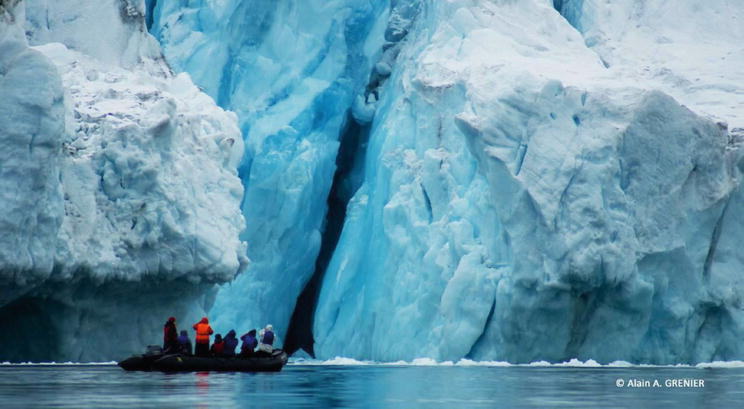

Introduction: From Niche to Norm
Once relegated to the fringes of the travel industry, perceived as a rustic choice for a select few environmentalists, eco-travel has undergone a monumental transformation. It has shed its niche image to emerge as a powerful, defining force in mainstream tourism. This is no longer a passing trend but a fundamental shift in global consciousness, reshaping how we explore our planet. Today’s traveler is increasingly informed, conscious, and driven by a desire to make a positive impact. This movement, often encapsulated by terms like sustainable travel, ecotourism, and responsible tourism, represents a holistic philosophy that extends far beyond simply reusing hotel towels. It’s about understanding the intricate connections between our wanderlust and the world’s ecological health, cultural heritage, and economic equity. This article delves deep into the drivers of this seismic shift, explores its multifaceted dimensions, and provides a practical blueprint for any traveler looking to align their adventures with the principles of sustainability.
A. The Paradigm Shift: Catalysts Behind the Eco-Travel Boom
The ascent of eco-travel into the mainstream is not an accidental phenomenon. It is the result of a powerful convergence of social, economic, and environmental factors.
A.1. The Climate Change Imperative
The most potent driver is the undeniable reality of climate change. Travelers are now acutely aware of tourism’s environmental footprint, which accounts for an estimated 8% of global carbon emissions.
-
Visible Impacts: From bleached coral reefs and melting glaciers to deforestation and loss of biodiversity, the consequences of environmental neglect are increasingly visible in the very destinations people wish to visit.
-
Personal Responsibility: A growing sense of accountability is compelling individuals to seek out travel options that mitigate their personal impact, viewing sustainable choices not as a sacrifice but as a necessity.
A.2. The Conscious Consumer Revolution
The modern traveler, especially Millennials and Gen Z, is a “conscious consumer.” Their purchasing decisions are increasingly influenced by their values.
-
Demand for Transparency: They expect transparency from travel companies regarding their sustainability practices, from waste management and energy sources to fair labor policies.
-
Voting with Their Wallets: These travelers are willing to invest in companies and experiences that demonstrably benefit the environment and local communities, effectively using their spending power to drive industry-wide change.
A.3. The Digital Catalyst and Social Media
Digital platforms have played a dual role in promoting eco-travel.
-
Awareness and Education: Documentaries, news articles, and social media influencers have been instrumental in highlighting both the problems of overtourism and the beauty of sustainable alternatives. The same platforms that once promoted mass tourism are now showcasing off-the-beaten-path destinations and eco-lodges.
-
The “Green” Aesthetic: Social media has created a desirable aesthetic around sustainable living, and eco-travel—with its images of pristine nature, unique wildlife encounters, and authentic cultural immersion—fits perfectly within this narrative.
A.4. The Search for Authenticity and Meaning
In a world saturated with generic, mass-produced experiences, travelers are craving depth and connection.
-
Beyond the Checklist: Eco-travel offers an antidote to superficial tourism. It prioritizes meaningful experiences—learning about conservation efforts, understanding local traditions, contributing to community projects—over simply ticking landmarks off a list.
-
Transformative Journeys: This form of travel is often seen as transformative, offering personal growth, new perspectives, and a deeper connection to the planet and its people.
B. The Pillars of Modern Eco-Travel: A Multifaceted Approach
True eco-travel is a comprehensive approach built on three interdependent pillars: environmental sustainability, socio-cultural respect, and economic equity.
B.1. Environmental Sustainability: The Foundation
This pillar focuses on minimizing the negative impact on the natural environment.
-
Carbon Consciousness: This involves making transport choices that reduce one’s carbon footprint. This can mean opting for direct flights (as take-offs and landings use the most fuel), traveling overland where possible, using public transportation, cycling, or walking. It also includes supporting airlines that invest in newer, more efficient fleets and Sustainable Aviation Fuel (SAF) research.
-
Resource Management and Waste Reduction: Eco-conscious accommodations and tours actively work to conserve water and energy, eliminate single-use plastics, and implement robust recycling and composting programs. Travelers are encouraged to participate by carrying reusable bottles, bags, and toiletries.
-
Biodiversity and Wildlife Protection: Responsible tourism supports conservation efforts and adheres to strict ethical guidelines for wildlife encounters. This means observing animals in the wild from a safe distance, avoiding attractions that involve animal performances or direct contact, and choosing sanctuaries and reserves that prioritize animal welfare over entertainment.
B.2. Socio-Cultural Responsibility: Traveling with Respect
This pillar emphasizes building a respectful and mutually beneficial relationship with host communities.
-
Cultural Sensitivity and Immersion: This goes beyond being a passive observer. It involves learning basic local phrases, understanding and respecting dress codes and social customs, and engaging with local culture in a way that is humble and inquisitive.
-
Preservation of Heritage: Sustainable travel supports the protection of both tangible heritage (historical sites, monuments) and intangible heritage (festivals, crafts, music) by generating funds for their upkeep and creating economic incentives for their continuation.
-
Empowering Local Voices: It ensures that tourism development is community-led. This means that local people have a say in how tourism is managed in their area and that the narrative about their culture is told by them, not by external corporations.
B.3. Economic Equity: Ensuring Local Prosperity
For tourism to be truly sustainable, the financial benefits must be widely distributed within the local economy.
-
The Local Economic Multiplier Effect: This principle dictates that money spent with local businesses—family-run guesthouses, neighborhood restaurants, independent guides, artisan cooperatives—recirculates within the community, creating jobs and fostering development.
-
Combating Economic Leakage: In conventional mass tourism, a significant portion of the revenue often “leaks” out to international corporations. Eco-travel seeks to plug these leaks by prioritizing locally-owned and operated services.
-
Fair Wages and Working Conditions: It supports enterprises that provide fair, living wages and safe working conditions for their employees, from hotel staff to tour guides.

C. The Greenwashing Challenge: How to Discern Authenticity
As the demand for eco-travel has skyrocketed, so has the practice of “greenwashing”—where companies deceptively market themselves as environmentally friendly without making substantial efforts.
C.1. Identifying Red Flags
Travelers must be vigilant to avoid falling for misleading claims.
-
Vague and Unsubstantiated Language: Be wary of terms like “eco-friendly” or “green” that are not backed by specific, verifiable details.
-
Emphasis on Minor, Token Gestures: A hotel that heavily promotes its towel-reuse program while having no comprehensive waste, water, or energy policy is likely engaging in greenwashing.
-
Lack of Transparency: A genuine sustainable business will be proud to share its policies, certifications, and partnerships. A reluctance to provide details is a major warning sign.
C.2. Seeking Legitimate Certifications
Third-party certifications are one of the most reliable ways to verify a company’s commitment. Look for established, rigorous credentials such as:
-
EarthCheck: A global scientific benchmarking certification for the travel industry.
-
Green Key: An eco-label awarded to hotels and other accommodations that meet high environmental standards.
-
Global Sustainable Tourism Council (GSTC): The GSTC sets international standards for sustainable travel, and accreditation by them is a gold standard.
-
B Corp Certification: For companies that meet high standards of social and environmental performance, transparency, and accountability.
D. A Practical Guide to Becoming a Conscious Traveler
Integrating eco-travel principles into your journeys is a progressive and rewarding process. Here is a actionable guide to get started.
D.1. The Pre-Trip Planning Phase
Your journey toward sustainability begins at home.
-
Destination Selection: Consider choosing destinations that are less crowded or known for their strong sustainability policies. Look for places that are actively managing tourist numbers to protect their environment.
-
Conscious Booking: Prioritize airlines with carbon offset programs (while understanding that offsets are a complement, not a solution) and newer, more efficient aircraft. Book accommodations that have legitimate eco-certifications or can clearly articulate their sustainability initiatives.
-
Pack Light and Smart: Packing lighter reduces the weight on planes and vehicles, thereby lowering fuel consumption. Bring a sustainable travel kit including a reusable water bottle with a filter, a coffee cup, utensils, and toiletries in refillable containers.
D.2. During Your Travels
Your actions on the ground are where your commitment truly comes to life.
-
Support the Local Economy: Eat at local restaurants, shop at markets, and hire local guides. This ensures your money has a direct, positive impact.
-
Be a Resource Guardian: Conserve water and energy in your accommodation as you would at home. Take short showers, turn off lights and air conditioning when you leave the room, and refuse unnecessary plastic packaging.
-
Respect Cultural Norms: Dress modestly when required, ask for permission before taking photos of people, and be open to different ways of life. Be a quiet observer and a respectful guest.
D.3. Post-Trip Reflection and Advocacy
The end of your trip is not the end of your responsibility.
-
Share Responsibly: When sharing your experiences on social media, highlight the sustainable aspects—the local guide who taught you so much, the family-run lodge, the conservation project you visited. Encourage others to make mindful choices, but be mindful of geotagging sensitive locations to prevent overtourism.
-
Provide Feedback: Let businesses know that you valued their sustainable practices. This positive reinforcement encourages them to continue and deepen their efforts.
-
Continue the Journey: Incorporate the lessons learned into your daily life and future travel plans. Sustainability is a continuous journey, not a single destination.
Conclusion: The Future is a Responsible Journey
The mainstreaming of eco-travel is the most positive development in the tourism industry in decades. It signals a collective maturation in our relationship with the planet and a recognition that we must be stewards, not just consumers, of the world’s wonders. This evolution is not about depriving ourselves of the joy of discovery; it is about enriching it. It promises more meaningful connections, more pristine environments to enjoy, and the profound satisfaction of knowing that our explorations are contributing to the health and vitality of the destinations we cherish. As this movement continues to grow, it will push the entire industry toward greater innovation and responsibility, ensuring that the beautiful places we love to visit will thrive for generations of travelers to come. The future of travel is not just about where we go, but how we choose to go there.
Tags: eco-travel, sustainable tourism, responsible travel, green travel, ecotourism, conscious travel, sustainable travel tips, eco-friendly travel, carbon footprint travel, community-based tourism, environmental travel, greenwashing





